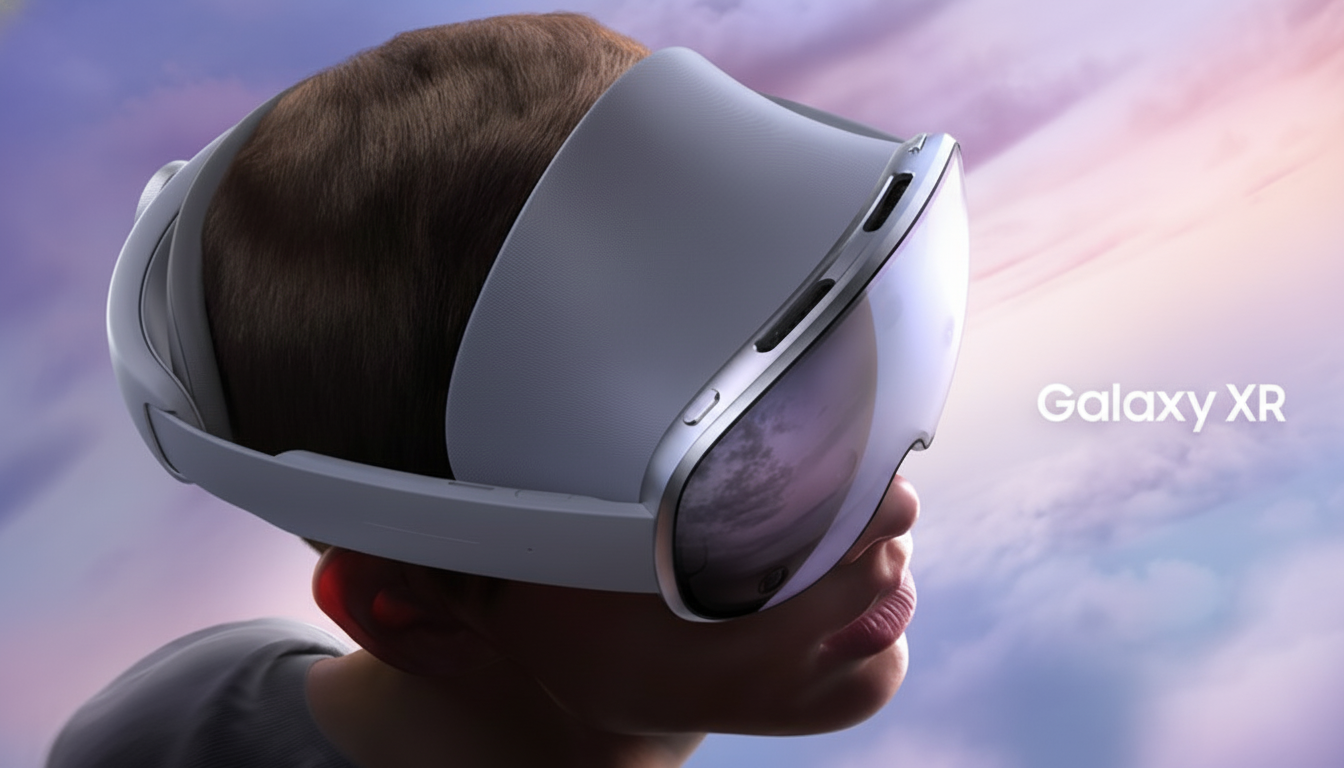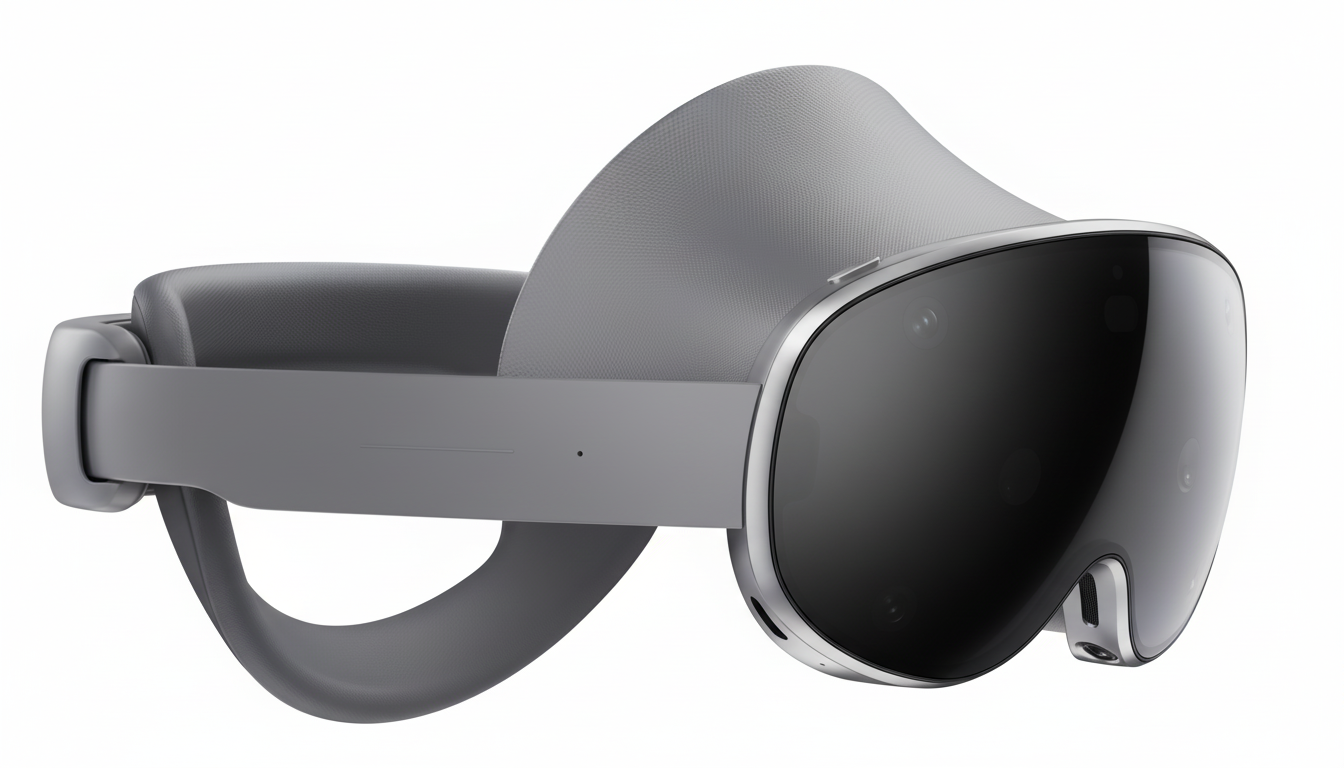After some hands-on time with Samsung’s upcoming Galaxy XR, I walked away feeling like this is the first mixed reality headset that regular people might be able to actually live with. It merges high-end optics, responsive controls, and considerate ergonomics into a sleek product that finally feels less like a tech demo and more like something you could just hand anyone without a 20-minute rundown.
Comfort and Awareness Come First in the Design
The Galaxy XR’s most direct victory is comfort. At 19.2 ounces, it undercuts Apple’s Vision Pro (26.4), and the halo-style strap with a rear dial helps balance weight across the crown and occipital bone. The result is less cheek pressure and fewer adjustments mid-session. With the two halves engaged, it felt secure during my demo—without the front-heavy feel of many metal-forward designs.

That happens on purpose; Samsung designed the lower part to be open, and that sounds counterintuitive—until you try it. That gap maintains spatial awareness while the visor and light block above keep out glare. The lower light shields are thin clip-ons for more intense darkness. Purists might long for a completely enclosed shroud—but the choice here is between comfort and orientation, with a color passthrough tending to jive more or less convincingly with natural perspective.
Input Gestures That Click on the First Try for Most Users
Hand-and-eye input is the point at which the Galaxy XR begins to feel universal. Point your index finger to cast a cursor, pinch to select, pinch-and-hold to drag or scroll—it’ll be second nature within minutes. The only one I struggled with after a quick training session was two-handed rotation, which would occasionally be mistaken for a single-hand hold until I synced my hands up. Everything else was on point with very little lag and solid hand-over-hand occlusion.
Eye tracking (with a newly built-in capability) is here and will be the dominant input method across the interface, although my demo was about hands. Samsung’s motion controllers, however, have the same dual-trigger, dual-button, and dual-stick setup that Quest users are already well accustomed to, if you’re using it in the more traditional manner of a VR headset; standard Bluetooth gamepads will work for compatible titles. That bendiness is important for accessibility, training, and gaming.
Android XR Feels Right at Home on Galaxy XR Hardware
The Galaxy XR is the first headset built on Google’s Android XR platform, and it shows. The OS is instantly familiar if you’ve used a modern mobile interface: a floating app launcher, resizable windows, and fast, consistent gestures. Multitasking is a breeze—tabs for Chrome, YouTube, and Google Maps can hang in your space, immobilized as you move around. It’s tabbing on the XR, minus the monitor.
Immersive mode for Google Maps was a favorite.
A 3D city model unfolds at tabletop scale, using natural gestures such as pinch-to-zoom and grab-to-pan. Interiors of venues pop into 360-degree, depth-aware environments—a more immersive browse than a flat Street View shot. I also got to see a 180-degree 3D trailer for the short film Asteroid—which gave an example of AI-driven voice interaction from one of its stars. It’s a peek at how content will straddle both interactive and cinematic form inside of Android XR.

Display Resolution and Silicon Upgrades Add Real Teeth
Samsung combines micro-OLED panels with a total of 29 million pixels across two screens, delivering a 109-degree horizontal field of view. Each eye gets a 3,552-by-3,840 image to look at, and that’s a big jump over popular headsets including the Meta Quest 2, and it even beats the Vision Pro on paper in terms of total pixel count. Text rendering, UI elements, and fine map details appeared sharp; there were fewer of the jagged edges that derail productivity applications on lower-resolution headsets.
The mixed reality view is held in place by a stereoscopic 6.5-megapixel passthrough array featuring 18mm f/2.0 lenses along with six external tracking cameras, four internal eye-tracking RGB cameras, depth and flicker sensors, multiple IMUs, etc. Movement felt closely married to head and hand movement, and that passthrough alignment helped me feel less of a “VR drift” reaching for real stuff on my desk at times.
Under the bonnet is the same processor: Qualcomm’s Snapdragon XR2+ Gen 2. Versus XR2 Gen 2, Qualcomm is promising up to 15% greater max GPU frequency and up to 20% higher max CPU frequency, translating into more pixels and better scene understanding. The external battery is 10.7 ounces and has up to two hours of mixed use or 2.5 hours of video—on a par with high-end competitors—and the cable never felt burdensome during my tests.
Price Positioning and the Early Verdict for Galaxy XR
Priced at $1,799, the Galaxy XR falls squarely between premium and midrange. It is well over $300–$500 for a standalone headset, but a great deal cheaper than the approximately $3,500 class. Samsung and Google are adding some sugar for early adopters with a package of services—memberships to Google’s premium tiers—worth more than $1,000 in all that help take the sting off for people committed to living on their ecosystem.
And crucially, Galaxy XR isn’t merely chasing specs; it wants to seem approachable. Lighter hardware reduces fatigue. The open-lower design eases orientation. Hand tracking just works the way you expect, and Android XR makes it feel instantly familiar. From a developer standpoint, the platform’s consistency with Android tooling should speed up app ports and new experiences, something that, in the past, has opened early mobile markets much faster than more closed systems did—as previously reported by IDC and CCS Insight among others.
There are plenty of tests yet to run—how well eye tracking works in a range of lighting conditions, how the optics stand up to text-heavy workflows, whether enough content rolls out behind the pipeline dam to keep new owners engaged. But, judging from my time with it, Samsung’s Galaxy XR is the first mixed reality headset I can recommend without a set of qualifiers. It feels like it’s ready for everyone, and that’s a turning point the category has been crying out for.

